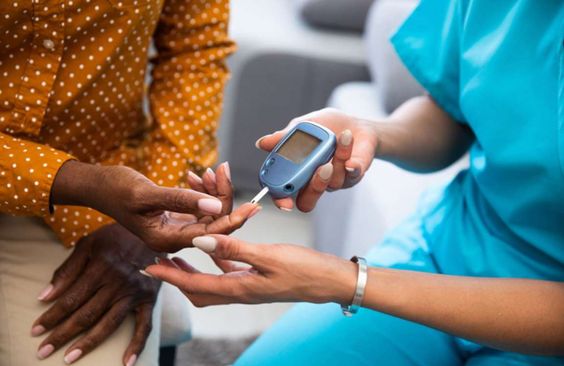Introduction
Prediabetes is a serious health condition where blood sugar levels are higher than normal, but not high enough yet to be diagnosed as type 2 diabetes. Without lifestyle changes, adults and children with prediabetes are at high risk of progressing to type 2 diabetes. Progression away from prediabetes to type 2 diabetes is possible. About 88 million adults in the United States have prediabetes, but many don’t know they have it.

There are steps you can take to lower your risk of developing type 2 diabetes. Prediabetes can be reversed.
What are the Symptoms of Prediabetes?
Most people with prediabetes have no symptoms. However, some people may experience:
- Increased thirst
- Frequent urination
- Increased hunger
- Fatigue
- Blurred vision
- Frequent infections
- Slow-healing sores
- Numbness or tingling in the hands or feet
What are the Risk Factors of Prediabetes?
There are many risk factors that can contribute to prediabetes, including:
- Family history of diabetes. If you have a parent, brother, or sister with diabetes you are more likely to develop prediabetes.
- Age. Your risk for prediabetes increases as you get older, especially after age 45.
- Race/ethnicity. African Americans, Hispanic Americans, American Indians, and Asian Americans are at increased risk of developing prediabetes.
- Overweight or Obesity. The more fatty tissue you have, the more resistant your cells become to insulin.
- Physical inactivity. The less active you are, the greater your risk. Physical activity helps you control your weight, uses up glucose as energy and makes your cells more sensitive to insulin.
- Gestational diabetes. If you had diabetes while pregnant (gestational diabetes) you are at increased risk of developing prediabetes. If you gave birth to a baby weighing more than 9 pounds (4.1 kilograms), you’re also at risk of prediabetes.
- Polycystic ovary syndrome (PCOS). Women with PCOS, a common condition characterized by irregular menstrual periods, excess hair growth and obesity, have an increased risk of prediabetes.
- Certain medications. Some medications such as steroids can increase your risk of prediabetes.
- Prolonged lack of sleep. People who regularly sleep less than 6 hours a night may have an increased risk of prediabetes.
- Certain medical conditions. Sometimes prediabetes is triggered by an illness, such as a severe infection or trauma, or when you have certain medical conditions, such as Cushing's syndrome or glucagonoma.
Can Prediabetes be Reversed?
Yes, prediabetes can be reversed. You can delay or prevent type 2 diabetes by losing a modest amount of weight, eating healthy and getting regular physical activity.
- Lose weight. Losing just 5% to 7% of your body weight can make a big difference in your blood sugar levels. For example, if you weigh 200 pounds (91 kilograms), losing just 10 to 14 pounds (4.5 to 6.4 kilograms) can help.
- Eat a healthy diet. Choose foods low in saturated and trans fats and cholesterol. Focus on fruits, vegetables, whole grains and lean protein.
- Be physically active. Aim for at least 30 minutes of moderate-intensity physical activity most days of the week.
If you are concerned that you may have prediabetes, talk to your doctor. They can order a simple blood test to check your blood sugar levels. If you are diagnosed with prediabetes, there are steps you can take to lower your risk of developing type 2 diabetes. Making lifestyle changes like losing weight, eating a healthy diet and being more active can make a big difference.





